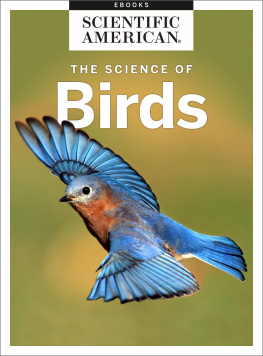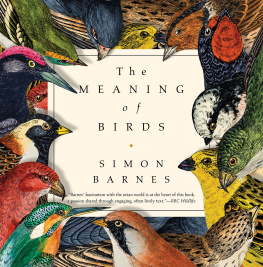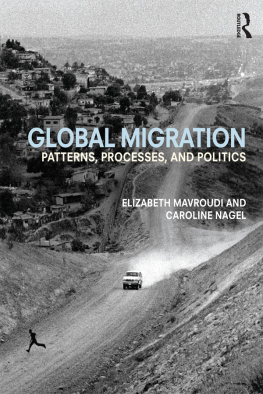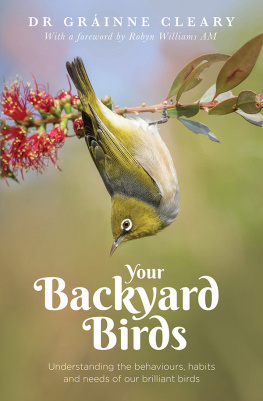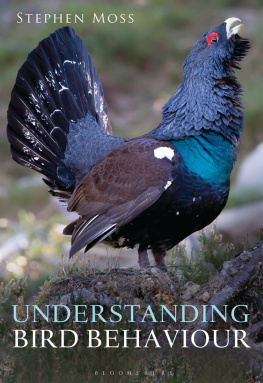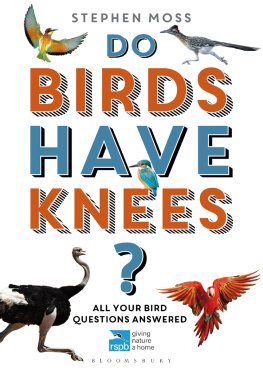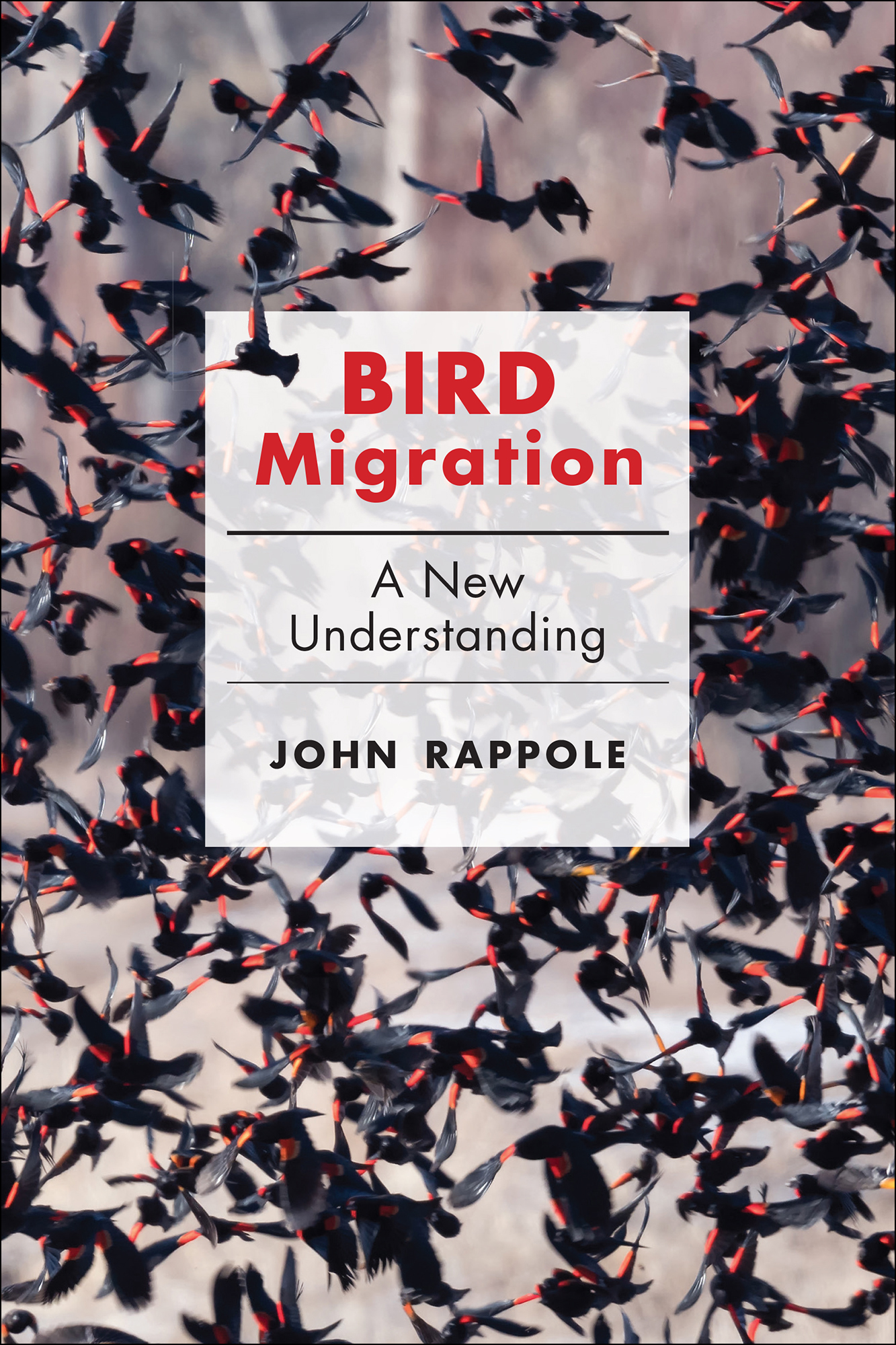Contents
Guide
BIRD
Migration


BIRD
Migration
A New Understanding
JOHN H. RAPPOLE

Johns Hopkins University Press
Baltimore

2022 Johns Hopkins University Press
All rights reserved. Published 2022
Printed in the United States of America on acid-free paper
2 4 6 8 9 7 5 3 1
Johns Hopkins University Press
2715 North Charles Street
Baltimore, Maryland 212184363
www.press.jhu.edu
Library of Congress Cataloging-in-Publication Data
Names: Rappole, John H., author.
Title: Bird migration : a new understanding / John H. Rappole.
Description: Baltimore : Johns Hopkins University Press, 2022. | Includes bibliographical references and index.
Identifiers: LCCN 2021002624 | ISBN 9781421442389 (hardback) | ISBN 9781421442396 (ebook)
Subjects: LCSH: BirdsMigration.
Classification: LCC QL698.9 .R375 2022 | DDC 598.156/8dc23
LC record available at https://lccn.loc.gov/2021002624
A catalog record for this book is available from the British Library.
All illustrations not otherwise credited are the authors.
Special discounts are available for bulk purchases of this book. For more information, please contact Special Sales at .
Among the most important discoveries for me concerning migratory birds is the central role played by the distaff members: not subservient, not subordinate, not supporting, but central. Male dominance, long considered the wellspring of avian interactions between the sexes, is found to be impotent, at least during the migrant breeding season. It is females who call the shots, with all due respect to Konrad Lorenz and many others. Accordingly, I dedicate this effort to the extraordinary women who have played central roles in my own life: my wife, Bonnie Carlson Rappole; my mother, Francesca Goodell Rappole; my daughter, Brigetta Rappole Stewart; and my sisters, Francesca Rappole Wellman Miller and Rosemary Rappole.


Preface
Most people think they know a lot about bird migration. Almost everyone has seen many explanations for the phenomenon in a variety of media formats. However, these explanations are based on the premise that migration is all about weather (Figure P.1). Its not. Certainly weather, especially winds aloft, can be important in shaping some movements of some species some of the time, but it is not the ultimate cause.
Migration is about competition and seasonal change in food resources. It originates when young birds are forced to move away from the place where they were born in search of suitable habitat that is not already occupied by competitorshabitat where they can find mates and raise more young than they would have been able to had they stayed at home. This movement, known as dispersal, is possible because of a superabundance of food. Without such a superabundance, the travelers would not get very far from home. Dispersal is the engine driving migration; seasonal change in food availability is the enabler. When food becomes superabundantthat is, available in greater supply than resident birds can consume due to seasonal climate changethe disperser can move and find new areas where it is possible to live and breed in the absence of, or at least in a reduction of, competition. If the climate changes at some later date, causing a disappearance of the foods on which the disperser depends, then the disperser must move again, and its best move is to go back to where it originated since that place, at least, is certain to have the proper habitat, albeit with plenty of competitors.
A critical caveat to keep in mind for the purposes of this discussion is the difference between climate and weather. Weather is defined as the physical characteristics of the environmentsuch as temperature, wind, and precipitationat a given moment in time. Climate is these same physical characteristics over a period of time (months, years). Seasonal climate change, through its effect on food availability, is the driver of migration. Weather is not.
Attributing migration to dispersal from a more stable environment to a less stable one, with food and mates available on only a temporary seasonal basis, requires a complete reversal of how migratory bird ecology and evolution are currently understood. The breeding ground is not where the migrant originated from (it often originated from the wintering ground). Migrant evolution, including niche structure, is not shaped primarily by the breeding ground; instead, it is the wintering ground where migrants normally confront the most intense competition (having left a place where food was superabundant), and hence the most important aspects of natural selection occur here. Males do not control female behavior during the brief breeding season; in fact, the reverse is true due to the fact that females regulate male access to successful reproduction. The migrant annual cycle contains at least five seasons (spring migration, breeding, postbreeding, fall migration, and winter), not three (breeding, migration, winter). Each of these seasons has its own unique aspects and challenges that differ for the different age and sex groups and, indeed, for each individual based on its own specific experiences. And so on.
My purpose in writing this book is to explain migratory bird ecology and evolution from the perspective of an origin based on competition and dispersal rather than weather change. This approach requires a complete rethinking of the processan exercise that is neither clear nor straightforward. In fact, the effort makes me mindful of a dream that I had recently in which I was sitting in a classroom with five or six fellow students and a professor. The prof said that before beginning the days discussion, we would have a short quiz. He would state the questions, and we were to write the answers.
First question: You are walking down the road. A scan ahead shows a stop sign. How far away is it?
My first thought was What!? Then I thought, maybe a scan might be some archaic distance measure like a league, but if so, of what length and in what system? If it is a measure, perhaps base ten, so maybe one hundred of something. Meters would be a lot for a pedestrian; maybe feet? So I wrote, One hundred feet. By this time he was on to the next of about five questions, all similarly opaque to me. When finished, he asked for our answer sheets and said, Lets get started. I raised my hand and said I was completely mystified by the first question. What was the answer? He looked to the young woman sitting next to me, who, with a slight smile, answered, A tree. I just stared at her and then looked at the professor with my mouth open. He said, Yes. Thats correct. Theres always a tree next to a stop sign. Then I woke up.



